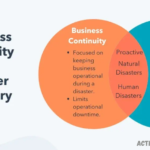A mixed economy is an economic system that combines the features of both capitalism and socialism, striking a balance between private enterprise and government intervention. In such a system, individuals and businesses have the freedom to own property, make economic decisions, and engage in market transactions.
At the same time, the government plays an active role in regulating and guiding the economy to address social needs, correct market failures, and promote equitable outcomes. The United States, as one of the world’s largest economies, operates under this mixed model, ensuring both economic freedom and a degree of government oversight to protect public welfare and achieve broader societal goals.
Market Economy Characteristics
In a market economy, supply and demand dictate the production, distribution, and pricing of goods and services. Producers and consumers make decisions based on their own self-interest, and the role of government is minimal. There is a focus on private ownership, competition, and limited government interference in economic activities. In theory, market economies promote efficiency and innovation, driven by competition and profit motives.
The United States, like most modern economies, allows market forces to determine many aspects of economic life. For example, the private sector is a dominant force in industries like technology, finance, and manufacturing. Companies are free to produce goods, set prices, and engage in trade with minimal government intervention. The competitive nature of the market allows businesses to innovate, improve products, and respond quickly to changes in consumer demand.
Government Intervention: The Mixed Economy
While the U.S. economy certainly has market economy characteristics, it is not purely a market economy. The government plays a significant role in regulating industries, protecting consumers, ensuring fair competition, and addressing social issues. This is where the mixed economy aspect comes into play.
Government intervention in the U.S. economy includes regulating monopolies, setting minimum wages, providing subsidies, and overseeing public services. Agencies like the Federal Reserve, Securities and Exchange Commission (SEC), and Environmental Protection Agency (EPA) regulate financial markets, environmental protections, and consumer safety. Additionally, the government provides a social safety net through programs like Social Security, Medicare, and unemployment benefits, aiming to reduce inequality and ensure basic welfare.
Furthermore, government involvement extends to infrastructure, education, healthcare, and defense, which are either funded or heavily regulated by the state. The U.S. also has a progressive tax system that redistributes wealth to some extent, funding these public goods and services.
Visit Now: Financial Services Forum: Definition, Mission, and Accomplishments
Balancing Capitalism and Social Responsibility
The U.S.’s mixed economy strives to balance the benefits of a free-market system with the need to address public welfare. While businesses thrive in a capitalist environment where competition and profit drive innovation, the government’s role is critical in maintaining stability, fairness, and social responsibility.
For instance, without government intervention, markets can become monopolistic, with a few companies controlling entire industries. The government addresses this issue through antitrust laws and regulations that promote competition and prevent anti-competitive behavior. Similarly, without the regulation of labor markets, workers might face unsafe working conditions, low wages, or exploitation. Government regulations such as minimum wage laws, workplace safety standards, and collective bargaining protections help protect workers’ rights and welfare.
Frequently Asked Questions
What is the difference between a market economy and a mixed economy?
A market economy is an economic system where the allocation of resources, production, and distribution of goods and services are determined by supply and demand with minimal government intervention. In contrast, a mixed economy combines elements of both market economies and government intervention. The government regulates specific sectors, provides public services, and ensures that economic inequalities are addressed.
Is the United States a pure market economy?
No, the United States is not a pure market economy. While it has many features of a market economy—such as private property, free markets, and competition—the government plays a significant role in regulating industries, protecting consumers, and ensuring public welfare, which makes it a mixed economy.
What are some examples of government intervention in the U.S. economy?
Examples include antitrust laws to prevent monopolies, labor laws to protect workers’ rights, subsidies for specific industries (such as agriculture or renewable energy), regulations for financial markets, and programs like Social Security and Medicare to support the welfare of citizens.
Why is the U.S. considered a mixed economy and not a market economy?
The U.S. is considered a mixed economy because, while it supports free-market principles, it also includes government regulation and intervention to address social needs, correct market failures, and ensure fairness in areas such as education, healthcare, and income distribution.
How does the government regulate businesses in the United States?
The government regulates businesses through various agencies and laws. For example, the Federal Trade Commission (FTC) monitors antitrust activity to prevent monopolies, the Environmental Protection Agency (EPA) enforces environmental standards, and the Securities and Exchange Commission (SEC) oversees financial markets to ensure transparency and fairness.
Does the government control all industries in the United States?
No, the government does not control all industries. Most industries, such as technology, entertainment, and retail, are privately owned and operate under market-driven forces. However, the government does regulate certain sectors (such as healthcare, energy, and transportation) to ensure consumer protection, safety, and environmental sustainability.
What are some advantages of a mixed economy in the United States?
A mixed economy allows for economic freedom, innovation, and competition while also addressing social welfare, environmental concerns, and market failures. The government’s role in providing public goods and services, regulating industries, and protecting vulnerable populations helps ensure fairness and stability within the economy.
What role do taxes play in the U.S. mixed economy?
Taxes are essential in a mixed economy because they fund government programs and services, such as healthcare, education, defense, and social security. A progressive tax system, where higher earners pay more, helps redistribute wealth and reduce inequality, supporting a fairer economic system.
Conclusion
The United States is best characterized as a mixed economy rather than a pure market economy. While the country embraces many of the core principles of a market system, such as private ownership, competition, and limited government intervention, it also incorporates significant government regulation and public sector involvement. The government’s role in areas like consumer protection, public welfare, environmental regulation, and infrastructure development helps to mitigate market failures and address social needs, which are key characteristics of a mixed economy.








